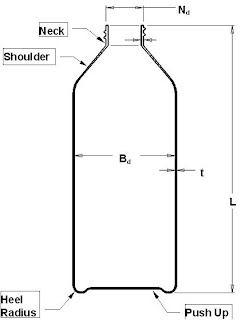Bimodal high density polyethylene, HDPE
We will try to imagine how bimodal molecular weight distribution rise. We will focus on two main properties: processing and mechanical. We start from normal (unimodal) molecular weight distribution (please, start to analyze the graph). Macromolecules with short chains, are easiest to process, polymer has lower viscosity, long chains are responsible for mechanical properties the grow. Considering, what left (middle), can be replaced. The idea was simple, eliminating average properties, we receive polymer with key properties.

Return to the most important, processing and final product properties, considering molecular weight distribution. Short fractions or single monomers are gaseous substance, waxes, their impact is questionable (easy degradation, responsible for bad odor) and appear for unimodal distribution, changing the distribution we eliminate them. Long fractions generally affect mechanical properties, e.g. stiffness, it is possible to reduce wall thickness (shorter cooling time, than cycle time, higher output) with the same results in drop and top load tests, etc. increase ESCR. Bimodal, HDPE is specially recommended for aggressive substances, e.g. in household segment. It has low die swell, Barus effect close to 1, designing the forming instrumentation we know the key parameter, on the other hand changing from unimodal to bimodal grade will probably cause investment in new instrumentation (from large cross-section to smaller, not possible!).
Summary, main properties for bimodal HDPE:
• higher stiffness (higher density),
•higher chemical resistance, ESCR (Environmental Stress Cracking Resistance),
• higher impact,
• low die swell (Barus effect),
• low degradation,
• no bad odor.
Bimodal HDPE has the same product application as unimodal grade, e.g. films, bottles, tubes, caps, etc. and it is a great example in developing on polymer segment.

Return to the most important, processing and final product properties, considering molecular weight distribution. Short fractions or single monomers are gaseous substance, waxes, their impact is questionable (easy degradation, responsible for bad odor) and appear for unimodal distribution, changing the distribution we eliminate them. Long fractions generally affect mechanical properties, e.g. stiffness, it is possible to reduce wall thickness (shorter cooling time, than cycle time, higher output) with the same results in drop and top load tests, etc. increase ESCR. Bimodal, HDPE is specially recommended for aggressive substances, e.g. in household segment. It has low die swell, Barus effect close to 1, designing the forming instrumentation we know the key parameter, on the other hand changing from unimodal to bimodal grade will probably cause investment in new instrumentation (from large cross-section to smaller, not possible!).
Summary, main properties for bimodal HDPE:
• higher stiffness (higher density),
•higher chemical resistance, ESCR (Environmental Stress Cracking Resistance),
• higher impact,
• low die swell (Barus effect),
• low degradation,
• no bad odor.
Bimodal HDPE has the same product application as unimodal grade, e.g. films, bottles, tubes, caps, etc. and it is a great example in developing on polymer segment.


Comments